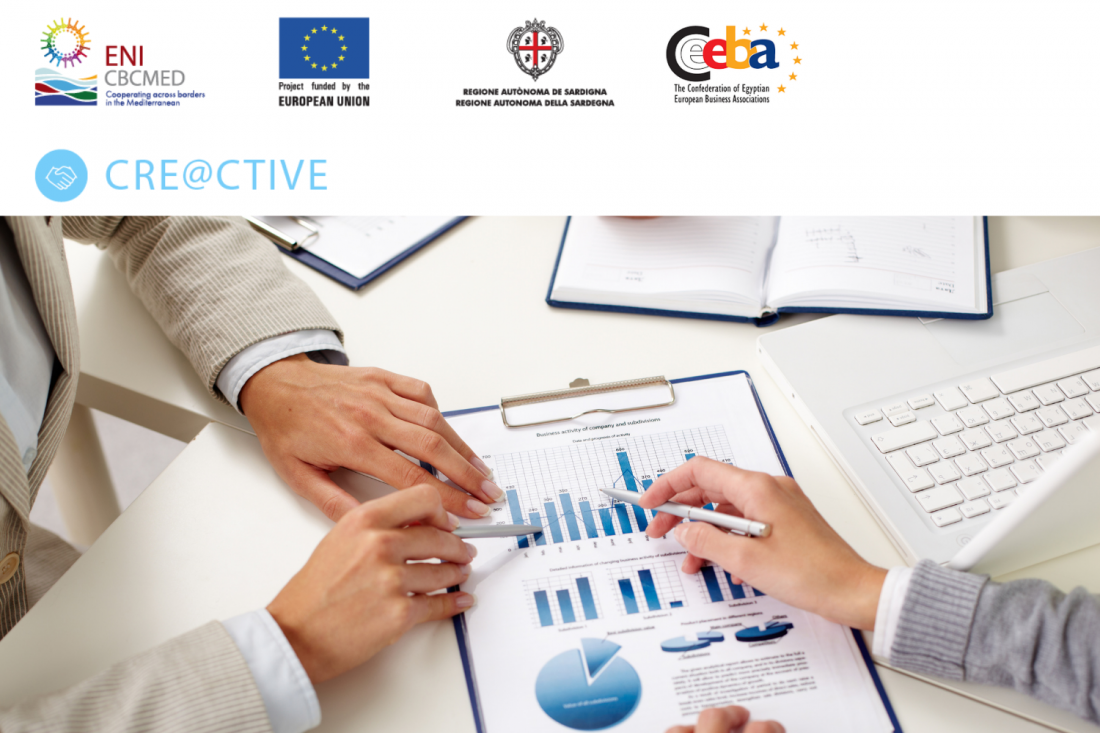Egypt: CRE@CTIVE project highlights significance of innovation for competitiveness of textile, leather, and footwear sectors

As one of the six countries targeted by the CRE@CTIVE Project on its aim to increase innovation in the traditional sectors in the med region, Egypt is considered a pioneer in the textile industry with a history that dates back to thousands of years. Through the different decades, the textile industry has prospered to become a major pillar for the Egyptian economic development.
Egypt currently features the Middle East's only fully vertically integrated textiles sector, with the entire process taking place domestically. The textile and apparel industry make up the country's second-largest industrial sector, accounting for 34% of industrial output and 3.4% of GDP.
The Egyptian textile industry is interestingly divided into two main sectors; one is publically owned by the government while the other is owned by the private sector. The public sector dominates the early stages of textile production, with 90% of the productive capacity in spinning, 60% in hemming and 60% in weaving but performs much weaker in apparel production, with a mere 30% share.
Some of the main challenges the study highlighted were issues that have been plaguing the Egyptian industries for years, namely: a largely untrained labour force, limited use of modern technology, low privatization process and major economic constraints. Current government reforms and initiatives are being implemented to help sustain the industry in order to address these concerns. By 2025, the government hopes to quadruple textile and garment exports by focusing on attracting international investment, enacting rules to assure better control, establishing more integrated supply chains, and encouraging innovation in existing industries.
The study also emphasized the industry's primary strengths and opportunities, including Egypt's strategic location and proximity to the EU and US, as well as the numerous preferential trade agreements with EU, US Arab, and African countries.
Most of Egypt’s clothing exports are conducted under preferential trade agreements such as the ‘Qualified Industrial Zone’ for the US market or under the ‘Partnership Agreement’ with the EU. Those agreements have been the drivers for these two markets making the USA and Europe the largest destination for exports with shares of about 56% and 35%, respectively. Adding the ten other trade agreements with other Arab African and South American countries, and its strategic position and proximity, solidifies Egypt’s presence in the international market.
The study also spoke about women’s role in the industry; almost 50% of employees in the textile and ready-made garments (RMG) sector, are women, most of whom come from suburban areas near the factories, like Damietta and Monofeya, and start working at the young age of 14. But due to societal norms, wage disparities, and discriminatory behaviour against women in the workplace as well as the failure to provide appropriate accommodation for married women and their families, which ultimately results in them leaving the industry at the age of marriage (early 20s) to care for their families. This causes a significant amount of turnover in the sector, as those women would have been regarded highly skilled employees at the time. Efforts are now being made to improve the conditions for women in the Egyptian labour market with a special focus on certain industries and sectors. These include: technical and educational programs to prepare women for the job market, policies that promote a better work-life balance for married women, equal pay and anti-discriminatory policies, and a shift in the cultural narrative on working women.
Finally, the study demonstrated and highlighted the significance of innovation in all of its form (design, process, education, etc.) in many aspects of the traditional industries’ process, as it is the driving force behind the development of Egyptian products. We hope to address those crucial areas through the CRE@CTIVE project in order to enhance the state of Egypt’s traditional sectors and the Mediterranean region as a whole.









